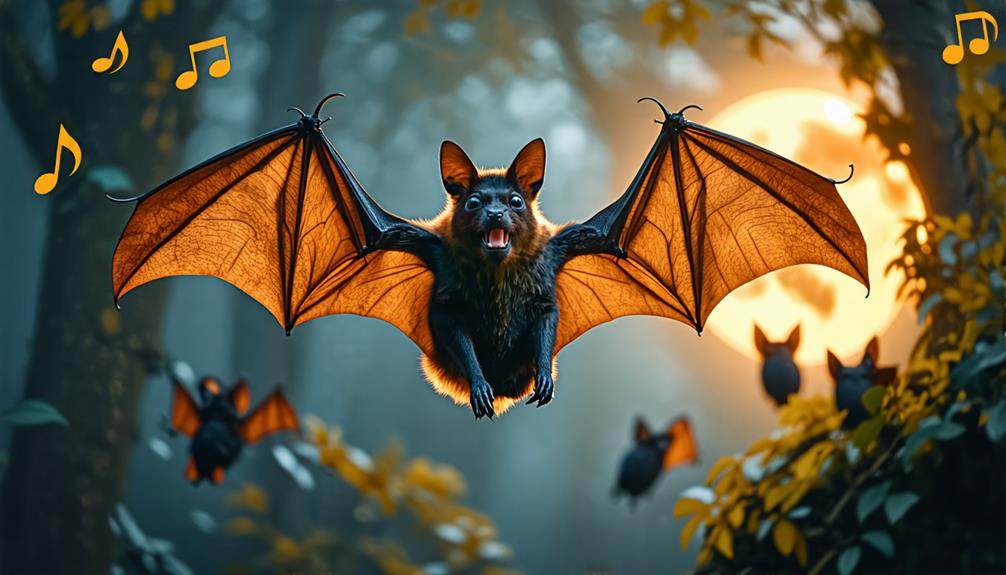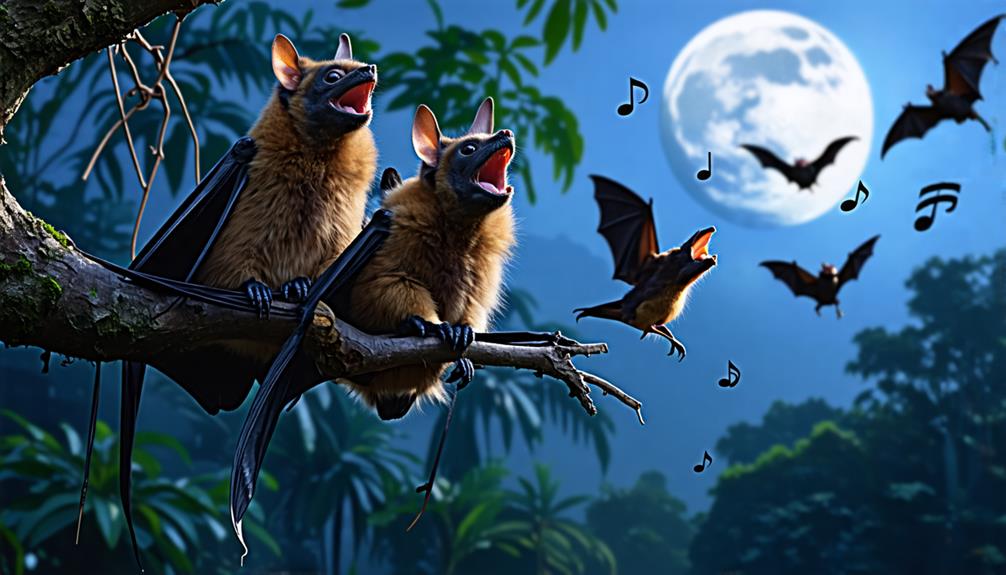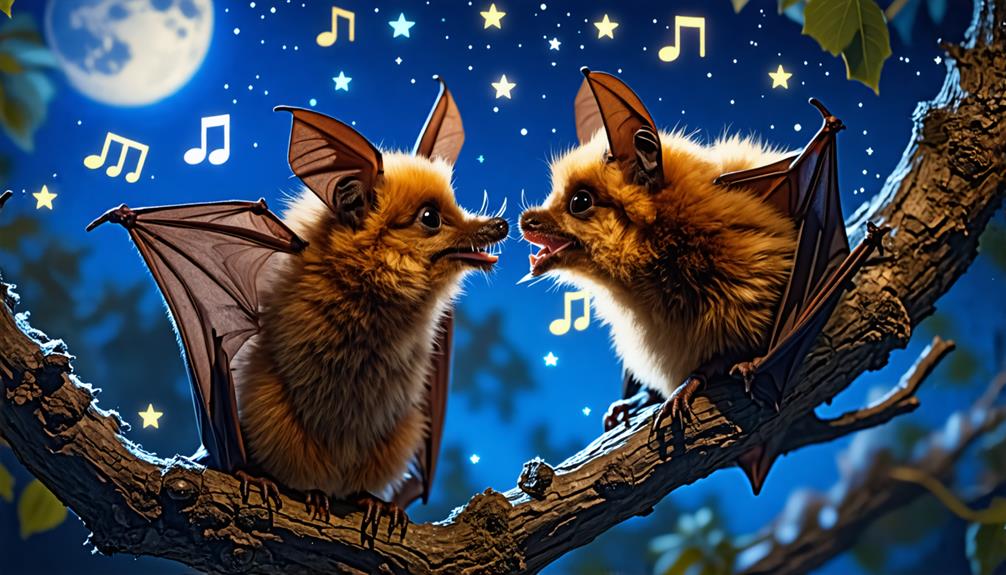You might think of bats as silent, nocturnal creatures, but there's more to these flying mammals than meets the ear. During mating season, some species of bats become nature's unexpected crooners, serenading potential mates with intricate love songs. These aren't just simple chirps or squeaks; male bats, particularly Brazilian free-tailed bats, compose complex vocal arrangements that rival the melodies of birds. Their repertoire includes chirps, buzzes, and trills, woven into elaborate sequences. But these bat ballads serve a dual purpose beyond courtship, revealing a sophisticated communication system that's only beginning to be understood.
Key Takeaways
- Male bats produce complex love songs consisting of chirps, buzzes, and trills during mating season.
- Brazilian free-tailed bats create structured sequences of syllables resembling bird songs.
- Bat love songs serve as both alluring serenades to attract mates and territorial warnings to rivals.
- Individual variations in bat songs challenge previous assumptions about mammalian communication capabilities.
Bat Vocal Repertoire

Within the domain of bat communication, you'll find a surprisingly diverse vocal repertoire that goes far beyond simple echolocation. Male bats, in particular, produce complex love songs to attract females and assert dominance. These vocalizations consist of various phrases, including chirps, buzzes, and trills, which form intricate patterns of communication.
You'll discover that different bat species have their own unique sounds. For instance, silver-haired bats use lead calls, droplet calls, and multiple chirp calls. Brazilian free-tailed bats take it a step further with structured sequences of syllables, resembling bird songs in complexity. These vocalizations showcase the sophisticated nature of bat communication.
As you explore deeper into the bat vocal repertoire, you'll uncover individual variations in songs, with each bat adding its own flourishes and structural changes. This complexity challenges previous assumptions about mammalian communication, revealing a rich world of bat vocalizations.
Love Songs and Mating
You'll find that male bats' love songs play an important role in their mating rituals, serving as both alluring serenades for potential mates and territorial warnings to rival suitors. These intricate vocalizations, particularly evident in species like the Brazilian free-tailed bat, consist of distinct syllables and phrases arranged in complex sequences. Male bats use chirps, trills, and buzzes to convey specific meanings and attract females during the mating season.
Research suggests a strong link between these love songs and courtship behavior, with mating activity often observed alongside vocalizations. Each male bat's unique song variations may enhance his attractiveness and signal his fitness to potential partners.
This discovery of bat love songs challenges previous assumptions about mammalian communication, revealing a level of vocal complexity comparable to birds and whales. It's clear that these vocalizations are essential to bats' mating success.
Implications for Animal Communication

The discovery of complex love songs in bats extends beyond their mating rituals, offering profound insights into animal communication as a whole.
You'll find that bat songs challenge previous assumptions about mammalian vocal communication, revealing structured patterns similar to those in bird and whale songs. These high-frequency sounds serve multiple purposes, from attracting mates to warning rivals, highlighting the sophistication of bat communication.
As you explore deeper, you'll see that recorded vocalizations, including lead calls, droplet calls, and chirp calls, demonstrate complex acoustic communication systems.
This newfound understanding of bat songs opens up exciting avenues for research into animal behavior and social structures. By studying how bats use these intricate vocalizations during courtship and beyond, you're gaining valuable insights into the potential complexity of communication in other animal species as well.
Conclusion
You've discovered a fascinating aspect of bat behavior. Their love songs reveal a complex communication system you mightn't have expected from these creatures.
As you explore deeper into animal communication, you'll find that bats aren't alone in their musical talents.
This knowledge enriches your understanding of nature's diversity and reminds you that there's still much to learn about the secret lives of animals all around us.

Leave a Reply